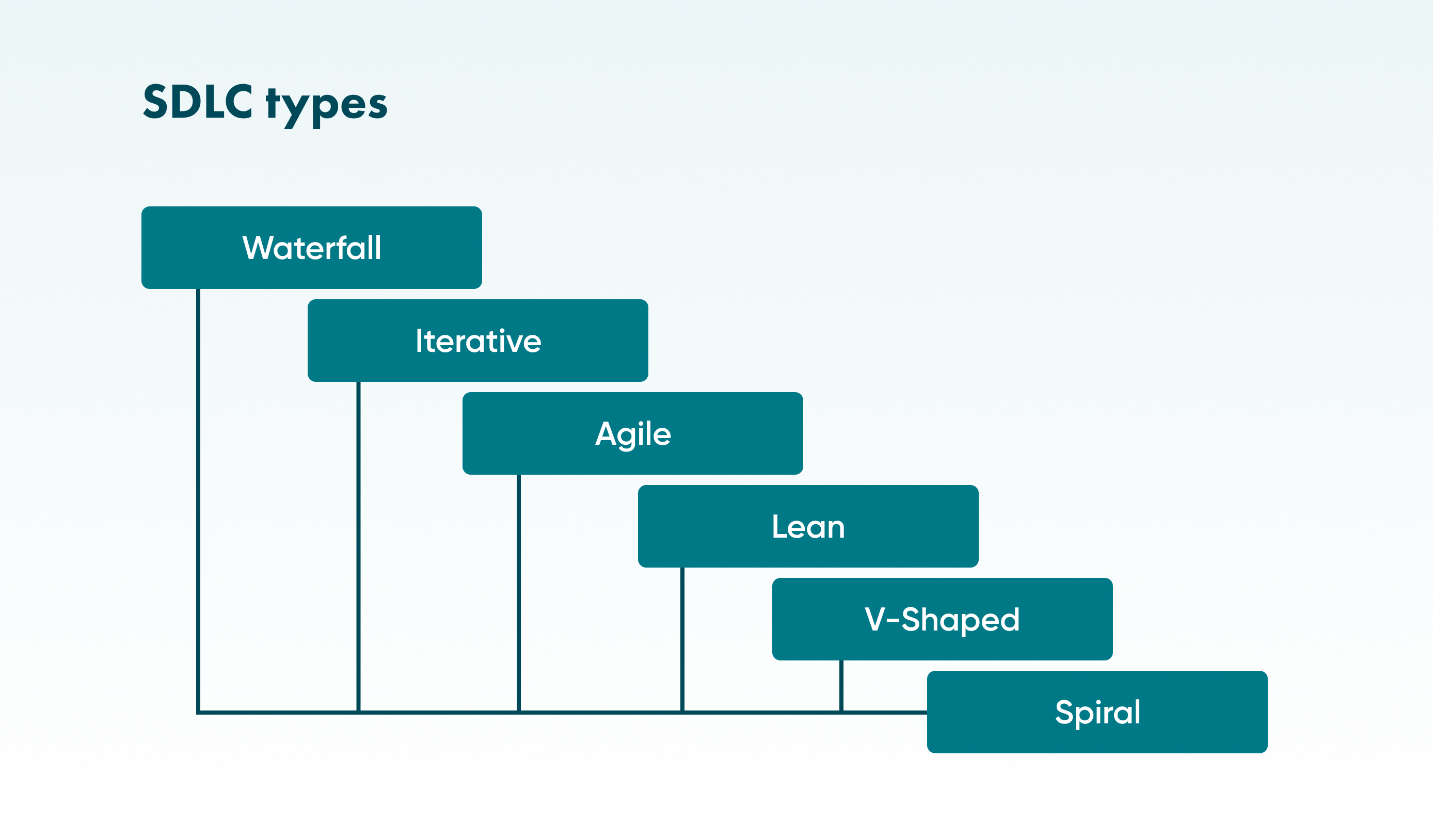Understanding the Software Development Life Cycle (SDLC)


Everything you need to know about the SDLC from how it works to deployment to its users
The software development life cycle (SDLC) is a complex and relevant IT topic, especially for small and medium-sized companies (SMEs). Despite its complexity, implementing this instrument leads to reducing the development time, increasing process visibility for all participants, and setting workflow standards in the company. As a result, the customers, final users, employees, and business owners are happier and more productive.
Statistics say that 90% of world businesses are SMEs and they provide 50% of jobs worldwide. This makes competing between SMEs especially challenging. The only way to the top, where the sales are, is to keep improving every part of business processes to make them faster and more effective.
We at Go Wombat believe that the SDLC is one aspect every IT company should implement and improve.
This article provides information about SDLC models, benefits, and phases of the SDLC.
What is the SDLC and how does it work?
The SDLC is the process of producing the application. The simplest explanation of the SDLC is the following formula:
SDLC = high quality + lower cost + in the shortest term
The SDLC helps to structure and organise the workflow and makes it easier for the team to follow. It sets precise criteria for entries and exits at every stage. Thus, the team clearly understands how any stage will work for the current project with the set team.
Currently, the SDLC is regulated by the ISO IEC 12207 standard of software life cycle processes.
Roles and responsibilities

Project manager
A project manager (PM) is a person who performs planning, executing, and delegating tasks within the team. During day-to-day management, PMs ensure deadlines and keep track of the budget.
Project sponsor
The project sponsor (PS) is someone in senior management. Sometimes, the PS is an "owner" of the project. This person provides the team with support, leadership, and resources. Among other PS responsibilities is setting up communication between the PM and other decision-making groups.
Developers
In simple terms, developers in the SDLC are professionals who create software by using programming languages and other tools. Developers can write, test, debug, and maintain the application according to their specialisation and their role in the team.
Designers
In IT companies, designers work together with developers and project/product managers. Usually, they work on multiple software interface types and create new features.
Business analyst
The task of a business analyst (BA) is to make sure that the technical and business needs of the project are in harmony. Also, a BA conducts and documents the business process and analyses the data.
Release manager
A release manager is a person who plans a software release life cycle. Among a release manager's responsibilities, the most crucial are managing risks and monitoring the development process from the very beginning to the last point.
What are the 6 main SDLC models?

Waterfall model
Let’s start with the oldest and classic SDLC model: waterfall, first appearing in 1970. Dr Winston W. Royce described it in his work Managing the Development of Large Software Systems.
The significant difference between the waterfall model in comparison with other models is the linear sequential flow of stages. The previous phase should be completed before moving to another one without turning back. Therefore, this model does not suit projects that require flexibility. Also, waterfall is sensitive to delays in the early stages.
Iterative model
The opposite of the waterfall SDLC model is the iterative model. The key feature of the iterative model is repetition and repetitive testing. With an Iterative model of software development, the team can give clients a new version of the product at the end of each phase. Its beneficial side effect is the possibility of catching bugs easily and fixing them in the early stages. In addition, changes are cheaper to implement.
Agile model
With the agile model, every project is divided into builds, and every build is divided into iterations. Each iteration takes up to one to three weeks and determines the workflow for the entire team during that period. Therefore, teams have to communicate and interact with clients at every stage of the software development process. Also, testing is required after each iteration.
In the agile model, all stages of the SDLC are less predictable. The process may change users' or customers' priorities and decisions, adding work to projects and possibly delaying the release.
Lean model
This SDLC model aims to provide as many benefits for customers as possible. For example, it might save clients time, money, or other resources or deliver the final product faster and with higher quality. The seven lean principles are: eliminate waste, intensify learning, decide as late as possible, deliver as fast as possible, empower the team, build in integrity, and see the whole. With the lean model, every team member should cut unnecessary time, such as unneeded calls or ineffective tasks. Also, there is no place for multitasking. Everyone should work only on the crucial task ahead of them.
V-shaped model
This model is similar to waterfall. Verification and validation steps go side-by-side and create a strong and highly disciplined process. Testing should be performed at every stage to prevent big bugs from getting out of control. The V-shaped SDLC type is a good option for projects with clear, simple, and realistic requirements.
Spiral
The spiral model means that the project goes through four repetitive phases in a "spiral" until the project is completed. It might be hard to get to the end of this software development process if your team is full of perfectionists. However, it's a very flexible model with huge customising options. It is adjustable to users' feedback, and every round adds new features. A spiral model is a good option for large projects.
What are the 7 phases of the SDLC?

Planning or discovery phase
Imagine that you intend to build a house. You already have a picture in your mind and decide to build the house immediately, with no plan. As expected, the house built without a plan will not last long, if it’s built at all. Any project of the IT team is like a house and has to be treated as one.
So, planning is the first and the most important stage of the SDLC. In this stage, the project team defines goals and needed tools and estimates the cost and requirements. We are looking for solutions to our problems during planning, that's why it's vital not to skip this part. In some instances, this is known as, or can be linked with the discovery phase and forms the basis for the entire project.
Define requirements and analysing
This step aims to gather as much information about clients' expectations as possible. At this stage, specialists can help clients explain their vision of the result.
The specialists set healthy and effective communication with clients and gather information about all details and product specifications. Then, they analyse the system and check if it can meet users' expectations. Finally, the specialists document all results of the second stage of the SDLC for further usage.
Design and prototyping
Design is the third step of the SDLC process. During this process, developers choose the industry methods, programming language, and program architecture that suits the project the most. For example, in Go Wombat we work with Python, JavaScript, React, React Native, and Django.
The next step is working on the UI and the security plan. Then, the software development and design team send all developments to clients and other stakeholders. They can change some decisions and details and give them feedback. Sometimes systems design also includes a prototyping stage. It is the easiest way to test how the program will work. Prototyping also helps to reduce potential risks and save the project from release delay. As the last step, the team creates a design document as a navigation for all team members.
Software development
Finally, the fun part! Developing is the fourth and the most time-consuming stage of the SDLC. It's the start of production and the part where design decisions are interpreted. Also, it's a stage of project installation and making changes. During the developing stage, coders construct the framework with the chosen program language. There are tools that developers usually use: interpreters, debuggers, and compilers. Usually, the software development team comprises a few programmers. So, it's important to set effective work processes that are built specifically for groups.
Testing
The process of testing is usually performed before the product release and after deploying it into the testing environment. The goal of testing is to code bugs and identify and communicate with the software development team during bug fixing. The purpose of the testing stage is the assurance of meeting the client's requirements, which were set in the first stage of the SDLC.
Deployment
The seventh step of the SDLC process is project deployment. In simple words, this is when the software is released to the customer and users. Sometimes users are provided with training documentation that helps them use the application properly. Deploying is mostly an automated process.
However, it's still important to be aware of potential problems you can face. Real-life testing brings to light some hidden problems and issues with the software. Also, users' feedback can give a new perspective on the deployed product.
Maintenance
This is the last stage of the SDLC process. It's the users’ time to shine. Developers can't just leave the product unwatched after the application deployment. The software is constantly updated until it meets users' needs. Also, keeping in touch with the launched product is essential to fix new bugs and reduce vulnerabilities.
SDLC benefits for SMEs

An established and clear software development life cycle is beneficial for small and medium-sized businesses. Almost all business process improvements save us time, money, and energy. However, each of them does it in a unique way. Therefore, we should summarise some SDLC benefits for SMEs.
A streamlined process
A streamlined development process makes work predictable and easier for the team. When every team member knows exactly what stage of the project it is in, communication between specialists becomes more effective. Streamlined processes help to gain maximal productivity without additional investments.
Early problem identifying
Without a clear and workable SDLC, it is hard to track the project's status. As a result, the testing phase might be performed too late or too early. In that scenario, bugs and vulnerabilities can be easily left unattended, and the product will be released with money-consuming issues.
Easier problem-solving
SDLC requires discipline in sticking to the chosen model. Also, SDLC helps to build communication within the team. Those factors lead to not only early problem identification but also quicker problem-solving.
Unlock Success with Premium Software Development
Contact us


Conclusion
The Software Development Life Cycle has proven itself to be a trustworthy and reliable productivity-increasing tool. Through the last few decades it has continuously adapted new industry standards. The SDLC has seven stages, each of which is important for high-quality software. Also, there are six popular software development models, such as the waterfall model and the iterative model, among others. Not to mention, it has significant benefits for SMEs.
The SDLC plays an important part in securing software according to software requirement specifications.
If you want to bring your ideas to life or have any questions, set up a consultation with Go Wombat.
How can we help you ?






